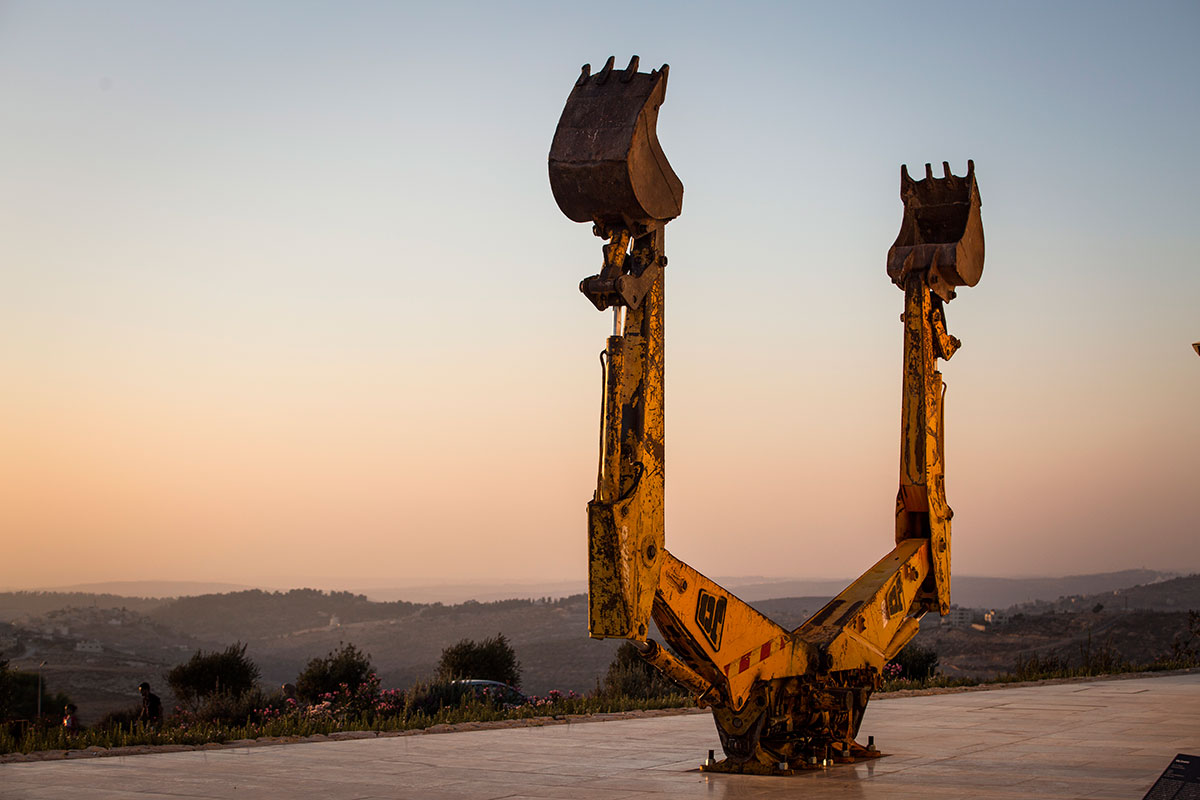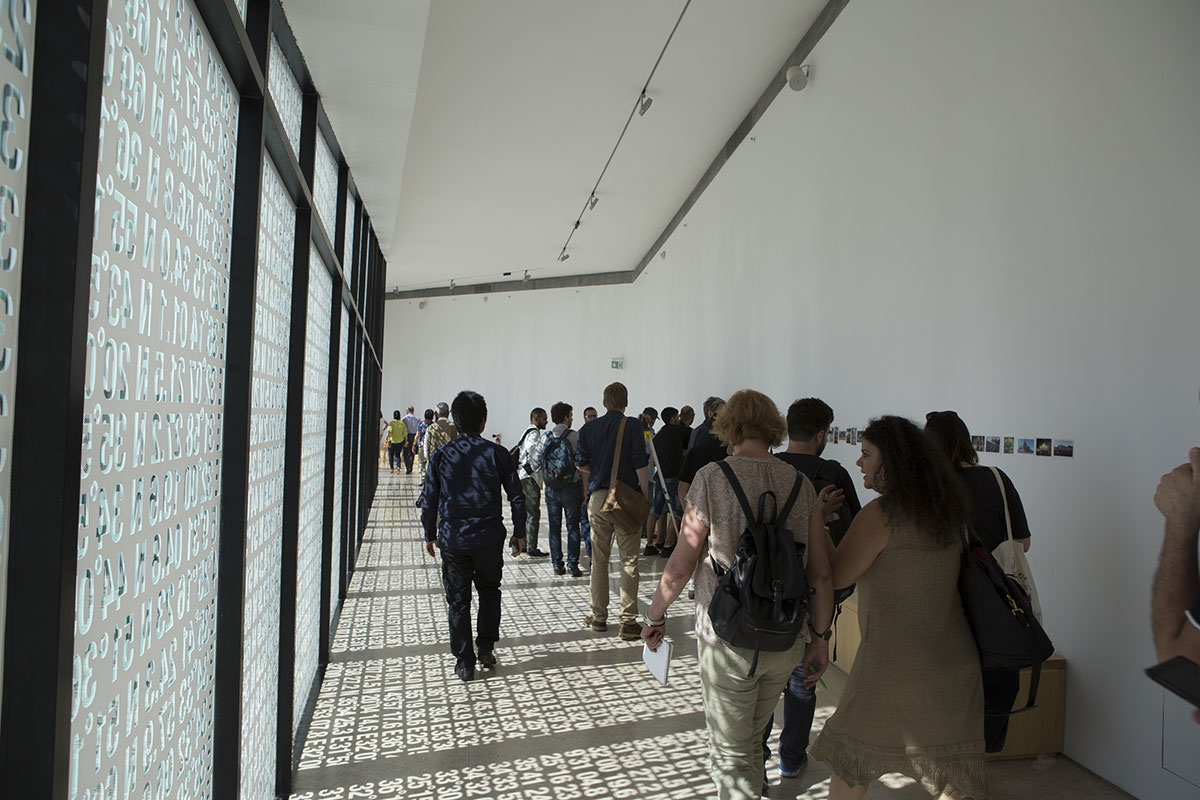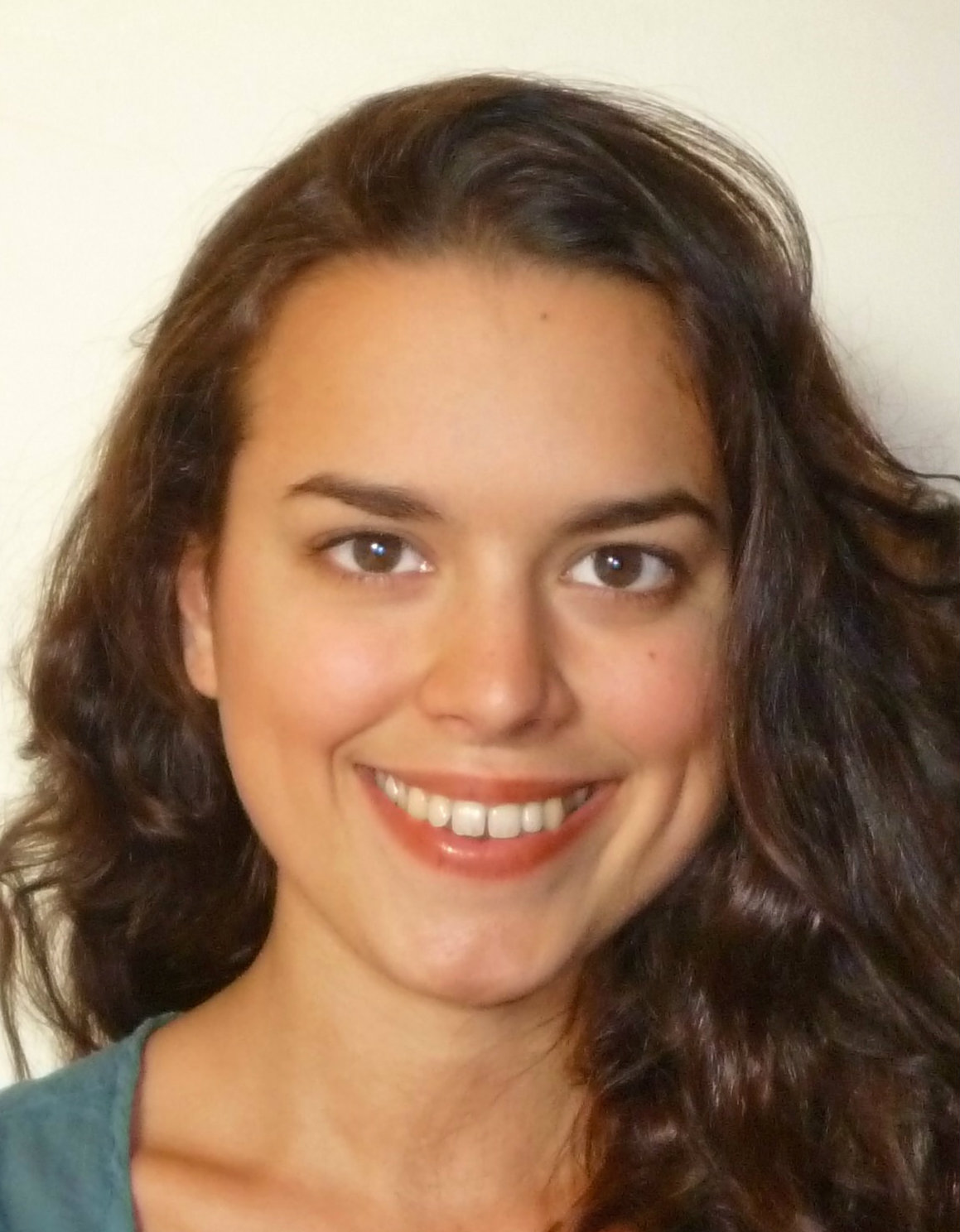Approaching the Palestinian Museum on foot, I find myself greeted by the disembodied voices of Emily Jacir’s sound installation Untitled (servees) 2008, transmitted through speakers positioned across an otherwise unassuming car park. Commissioned for the second edition of the Jerusalem Show, Jacir’s work was first presented at Damascus Gate, a former hub for communal taxis taking passengers as far as Beirut, Amman, Baghdad, and Kuwait. Bringing together the sounds of servees drivers calling out their pre-1967 destinations, Jacir’s work makes audible the isolation of Jerusalem from a once-thriving transportation network. Now translated from a bustling Damascus Gate onto a quiet Birzeit hilltop for the inaugural exhibition of the museum, Jacir’s work embodies – or rather disembodies – this isolation yet further. These voices are not only plaintive echoes across time, from pre-1967 to the present, but also across a land punctuated by walls, fences, and checkpoints.
Jacir’s work sets the tone for my first footsteps inside the Palestinian Museum. I recall that less than half an hour earlier, I had been navigating my way along the bustling Irsal Street in Ramallah. In search of the correct servees for my destination, I had approached every yellow minibus I saw in the hope – eventually fulfilled – that I would hear the driver call out “Birzeit.” And yet, my journey to the Palestinian Museum had begun long before I climbed into that servees with my fellow passengers. I am reminded once again that the freedom of movement I enjoy as an accident of my birth in the UK is a basic right withheld from many Palestinians.

Photo by Ziad Trad. © The Palestinian Museum.
Where Jacir harnesses the potential of sound to evoke a sense of time and place in Untitled (servees), so too does curator Reem Fadda in her inclusion of the sound work Muqtatafat in the opening gallery space of the exhibition. Composed of sound samples “from, about, for, and against Jerusalem” made by musician Muqata’a, this work helps immerse the visitor immediately in the soundscape of the city. Balancing the needs of the works presented with the creation of a particular sense of place within the exhibition, Fadda has devised an installation layout that allows the versatile gallery space to echo the topography of the Old City. Gaps between converging walls allow for glimpses (sometimes also bodies) to reach other sections of the gallery; alley-like structures veer off at angles, taking the visitor into unexpected areas; a large-scale vinyl photograph of the apartheid Wall looms over Mona Hatoum’s installation of Nabulsi soap and glass beads, Present Tense. There is no single narrative here, no “correct” trajectory through the space.
Jerusalem Lives is introduced as exploring the phenomenon of globalization in the city from “economic, political, ideological and cultural standpoints.” Each of these four perspectives might be given its own area of the gallery space, but we are nonetheless invited to move fluidly between them: such “standpoints” do not exist in isolation from one another. Neither, indeed, do the different areas of Jerusalem, however much the increasing annexation of the city might suggest otherwise. And yet, the invitation to navigate the exhibition on one’s own terms seems to amplify the denial of free movement into, within, and out of Jerusalem. Immersed, then, in Fadda’s complex installation from my first footsteps into the exhibition, I move through the spaces with a complex mixture of curiosity and caution, and with the awareness that my experience of the exhibition – like the city – is only ever partial, a weaving together of discrete encounters articulated by walls.

Photo by Hamoudi Trad. © The Palestinian Museum.
While the exhibition is structured around economic, political, ideological, and cultural frameworks in a globalized, occupied Jerusalem, Fadda also focuses attention on individual and collective forms of artistic resistance against the Israeli regime. With the legacy of artists working in the 1970s and 1980s still very much alive in the iconography of Palestinian resistance today, works by Sliman Mansour, Nabil Anani, Tayseer Barakat, and Abdul May Mosallam Zarara – as well as a selection of liberation posters – act as important points of entry to the exhibition. Mansour’s sketch for Jamal Al Mahamel might stop tantalizingly short of depicting the burden of Jerusalem in full, but a sense of the city-as-icon weighs heavily across this part of the exhibition. And this weight is not only felt through the works of that first generation of post-1948 artists: directly opposite Mansour’s sketch and oil painting hangs Yazan Khalili’s chromogenic print, Regarding Distance, The Image (2010). Depicting a poster of the Dome of the Rock hanging behind a vacated table, Khalili’s work speaks to a generation growing up after the Second Intifada, denied the possibility of visiting the city. The only permissible experience of Jerusalem for this generation, Khalili suggests, is offered by a mute, two-dimensional image, apparently devoid of human life: an icon of distance itself.
While Khalili’s prints are introduced here in the context of Jerusalem-as-symbol, their evocations of inaccessibility seem to usher me into the area of the exhibition that explores Israeli strategies of control. Like Jacir’s Untitled (Servees), Khaled Jarrar’s At the Checkpoint (2007) was initially conceived as a site-specific work, with day-to-day proceedings photographed at checkpoints across the West Bank and displayed on the fences at Hawara and Qalandiya in full view of the Israeli soldiers. Shown here in a white-walled gallery space for a largely Palestinian audience, direct resistance gives way to a form of documentation once-removed. In this space, I become aware of these works as objects with complex material histories: every scuff, scratch, scar that marks the surface of a print recalls an act of violence that draws attention to Jarrar’s act of resistance.
At the center of the exhibition, the multiple pathways of the exhibition converge on a small chamber that contains Ahed Izhiman’s commissioned work, The Ring (2017). Using photographs of Israeli settlements built on land immediately east of Jerusalem, Izhiman stitches the images into a 360-degree panorama reflecting the alleged plan for developing further settlements into a ring that will eventually surround and close off Jerusalem completely. Choosing to situate this work within four walls at the heart of the gallery space, Fadda allows for the growing annexation of the city – otherwise experienced through statistic-laden infographic posters – to be felt viscerally. Nearby, a propagandist video by the Israeli settler organization “Save Jerusalem” describes how Arab and Palestinian communities pose a threat to the city of Jerusalem that must be controlled and curtailed. Izhiman’s work becomes yet more urgent: I am forced to re-read the installation as a lamentably foreseeable future rather than an imagined worst-case scenario.
It is with a better-informed mind but heavy heart that I move towards the second chapter of the exhibition, installed in the garden of the museum. And yet, what I find there revives something in me: a sense of hope, a sense that other futures might be possible. In his work KA (Oslo), Jerusalem-based artist Nida Sinnokrot installs two JCB 3CX backhoe arms from a 1993-model digger upside-down on the terrace of the museum. The explanatory text tells me that the Egyptian hieroglyph “Ka” symbolized a life force that was both destructive and creative. While the scarred surfaces of the arms might recall the state of the post-Oslo Palestinian landscape, they reach towards the sky in a gesture that seems to suggest defiance, prayer, triumph, and gratitude to outweigh despair and surrender.
As I move farther into the garden, I become increasingly aware of Basel Abbas and Ruanne Abou-Rahme’s installation We know what it is for/we who have used it (2017), returning my thoughts to the connections between sound and place that Jacir’s Untitled (servees) had stirred upon my arrival. Bringing together four 3D-printed replicas of Neolithic masks, the originals looted from the West Bank to enter private collections, Abbas and Abou-Rahme work to subvert the narratives told about these objects in the “Land of Israel” display at the Israel Museum in 2014. Here, the artists reanimate each mask with a speaker, transmitting recorded stories of the object’s historical relation to a now-destroyed Palestinian village. Reclaiming narratives as a method of resistance against Israeli cultural appropriation, the voices emanating from these masks seem to follow me as I move through the garden, as though speaking directly to me from the soil under my feet.
I stay in the garden of the Palestinian Museum to watch the sunset. As the light dims, so the presence in the landscape of Inass Yassin’s light-box installation God Bless (2017) grows. “Bless this earth whether it is holy or unholy,” it reads. I feel connected to and humbled by the land, the people who protect and cultivate it, and the artists and curators at the Palestinian Museum who respond to it with such eloquence. In that moment, with the sun disappearing beyond the horizon, it is not so much the symbolic capital of the land that seems to matter but its material reality and our shared responsibility towards it, now and in the future.


